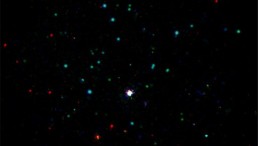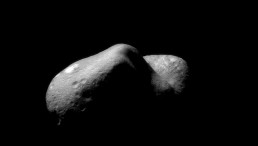A boost of vitamin C helped Rice University scientists turn small gold nanorods into fine ones.
Ascorbic acid is the ingredient that helped the Rice lab of chemist Eugene Zubarev grow pure batches of nanowires from nanorods without the failed results of previous techniques.
"There's no novelty per se in using vitamin C to make gold nanostructures because there are many previous examples," Zubarev said. "But the slow and controlled reduction achieved by vitamin C is surprisingly suitable for this type of chemistry in producing extra-long nanowires."
Details of the work appear in the American Chemical Society journal ACS Nano.
The Rice lab's nanorods are about 25 nanometers thick at the start of their process and it remained that way while the length of the nanorods grew to become long nanowires. The objects are considered nanowires as they are above 1,000 nanometers in length. The aspect ratio of the wires, length over width, shows how they emit the light they absord and how they conduct electrons. Combined with gold's inherent metallic properties, that could improve their value for diagnostic, imaging, sensing and therapeutic applications.
Zubarev and lead author Bishnu Khanal, a Rice chemistry alumnus, succeeded in making their particles go far beyond the transition from nanorod to nanowire.
The researchers also showed the process can be controlled and reversed. That makes it possible to produce nanowires of any desired length. It it also makes it possible to produce desired configuration for electronic or light-manipulating applications, especially those that involve plasmons.
The nanowires' plasmonic response can be made to emit light from visible to infrared and far beyond, depending on their ratios.
The process is slow, so it takes hours to grow a micron-long nanowire. "In this paper, we only reported structures up to 4 to 5 microns in length," Zubarev said. "But we're working to make much longer nanowires."
The growth process only works with pentahedrally twinned gold nanorods, which contain five linked crystals. These five-sided rods -- "Think of a pencil, but with five sides instead of six," Zubarev said -- are stable along the flat surfaces, but not at the tips.
"The tips also have five faces, but they have a different arrangement of atoms," he said. "The energy of those atoms is slightly lower, and when new atoms are deposited there, they don't migrate anywhere else."
That keeps the growing wires from gaining girth. Every added atom increases the wire's length, and thus the aspect ratio.
The nanorods' reactive tips get help from a surfactant, CTAB, that covers the flat surfaces of nanorods. "The surfactant forms a very dense, tight bilayer on the sides, but it cannot cover the tips effectively," Zubarev said.














